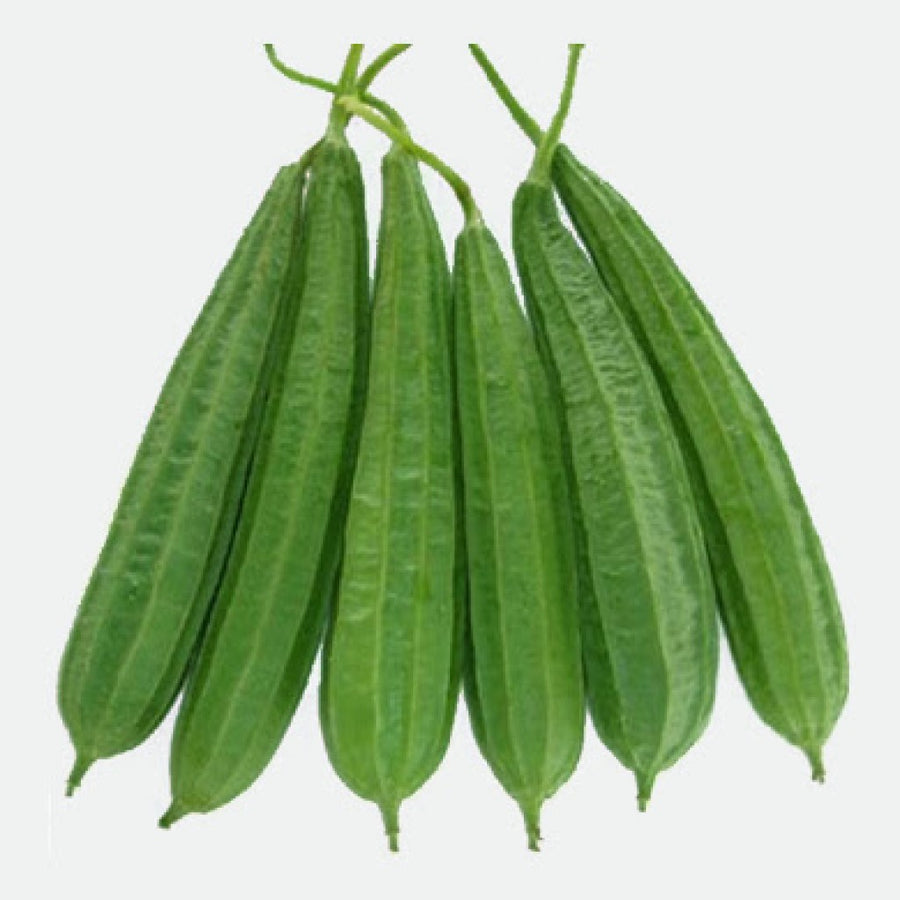Ridge gourd, also known as sponge gourd or angled loofah, is a widely cultivated vegetable in tropical and subtropical regions, particularly in Asia. It thrives in warm climates and has high market demand due to its versatility in cooking and medicinal uses. This guide provides a step by step approach to successfully growing ridge gourd, from site preparation to postharvest management.
Climate and Soil Requirements
Climate: Ridge gourd thrives in tropical and subtropical climates with temperatures ranging from 25°C to 35°C (77°F to 95°F). It requires a long, warm growing season.
Soil: Well drained, loamy soil with a pH of 6.0 to 7.5 is ideal. The soil should be rich in organic matter to support vigorous growth. Sandy loam is preferred for better drainage.

Land Preparation
Site Selection: Choose a field that receives full sunlight, as ridge gourd requires adequate light for healthy growth.
Land Clearing: Clear the field of weeds, rocks, and debris. This can be done manually or with a tractor.
Plowing and Tilling: Plow the soil 23 times to break up large clumps and improve soil aeration. This will help the roots establish easily.
Organic Matter: Mix 1520 tons of well rotted compost or farmyard manure (FYM) into the soil during preparation to enhance fertility.
Choosing the Right Variety
Select disease resistant and high yielding ridge gourd varieties suited for your region.
Seed Preparation and Sowing
Seed Selection: Use certified, high quality seeds to ensure good germination and healthy plants.
Seed Treatment: Soak seeds in water for 12 hours or treat them with a fungicide (like Captan or Thiram) to reduce the risk of soilborne diseases.
Sowing: Ridge gourd can be direct seeded or transplanted. For direct sowing, plant seeds 12 cm deep in rows spaced 4560 cm apart, with 0.51 meter between plants. For transplanting, sow seeds in a nursery and transplant 45 week old seedlings with similar spacing.
Irrigation
Watering Needs: Ridge gourd requires regular watering, especially during germination, flowering, and fruiting stages. Drip irrigation is ideal as it ensures consistent moisture and conserves water. In absence of drip systems, irrigate every 34 days, avoiding over watering to prevent root rot.
Avoid Waterlogging: Ensure that the soil is well drained to prevent fungal infections.
Fertilization
Organic Fertilization: Apply well composted farmyard manure (FYM) or compost before sowing to improve soil structure.
Chemical Fertilization: Apply balanced fertilizers with a ratio of nitrogen, phosphorus, and potassium (NPK) – typically 80100 kg of nitrogen, 4050 kg of phosphorus, and 4050 kg of potassium per hectare.
Split Application: Apply half the nitrogen at planting time, and the rest during flowering and fruiting stages. Apply phosphorus and potassium at sowing.
Training and Pruning
Trellis Setup: Ridge gourd is a climbing plant, so setting up a trellis or support system is important. This keeps the fruits off the ground, improving air circulation and reducing pest problems. Use bamboo poles or wire mesh to create the structure.
Pruning: Prune side shoots and excess leaves to encourage vertical growth, improve airflow, and direct energy to the main vines and fruits.
Pest and Disease Management
Common Pests: Common pests include aphids, whiteflies, fruit flies, and red pumpkin beetles. Neem oil or insecticidal soap can help control these pests.
Disease Control: Prevent fungal diseases like powdery mildew and downy mildew by using fungicides like sulfur or copper based products. Rotate crops and practice good field hygiene to minimize disease risk.
Integrated Pest Management (IPM): Implement IPM practices, such as using pheromone traps for fruit flies, introducing natural predators like ladybugs, and removing infected plants.
Harvesting
Harvesting Time: Ridge gourds are typically ready for harvest 6080 days after sowing, depending on the variety and growing conditions. Harvest when the fruits are young and tender, before they become hard and fibrous.
Harvesting Method: Use a sharp knife or shears to cut the fruits from the vine, handling them gently to avoid bruising.
Continuous Harvesting: Harvest every 23 days for continuous production and higher yields.
Postharvest Handling and Storage
Storage: Ridge gourd is highly perishable, so store the fruits in a cool, shaded area to prevent spoilage. Fresh fruits can last for 57 days, but for longer shelf life, consider drying the fruits to make sponges or other value added products.
Marketing: Ridge gourd is in demand in local markets for culinary use. It can also be sold to wholesalers or processing units. Dried ridge gourd fruits, used for making loofahs, can be marketed to health stores or exported.
Yield
Ridge gourd plants can yield between 812 tons per acre, depending on soil fertility, pest management, and climatic conditions. Higher yields are possible with careful management.
Additional Tips
Crop Rotation: Rotate ridge gourd with other crops like legumes or cereals to maintain soil fertility and reduce pest buildup.
Regular Monitoring: Continuously monitor your plants for pests, diseases, and nutrient deficiencies. Soil testing can help adjust fertilizer applications.
Soil Health: Maintain soil health by using organic amendments and practicing crop rotation.